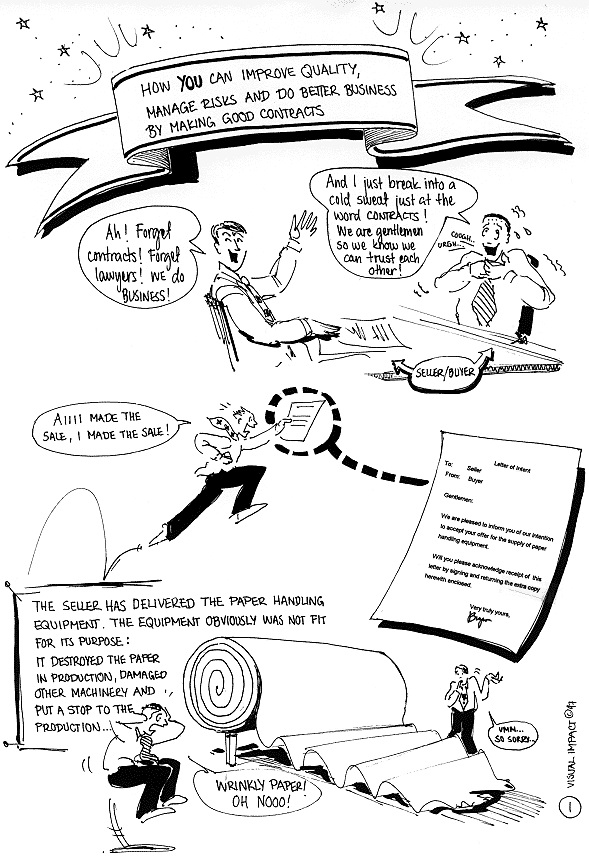We started our journey in Finland with an excellent insight from Antti Innanen explaining his introduction to legal design and how he co-founded Dot. We have also come to realise that Finland is home to several other legal design pioneers, so we felt we couldn’t leave this fair nation without hearing from someone whose work has helped to push legal design to the forefront of many a fine legal mind! Helena Haapio…
How did you first come across legal design?
I had the good fortune of being among the pioneers who started it all. In the early days, we did not call it Legal Design, though. I started to experiment with real-time visualization in contract education and contractual risk management already in the 1990s. Working with cross-border contracts, helping clients and their business partners collaborate and prevent unnecessary problems was so much easier and much more fun using sketching and images.
“They made it easier for people to make,
understand, and use contracts.”
Building on what is now known as Proactive Contracting and Proactive/Preventive Law I found that simplification and visualisation could help to operationalise the approach. That led to the idea of business-friendly and human-friendly contracts. And what better way to bring them to practice than empathy and design.
I came across the term Legal Design in the title of Colette R. Brunschwig’s doctoral dissertation of 2001. After seeing all the wonderful things she, Emily Allbon, and other early adopters had accomplished in their respective fields I became so curious that I turned to a part-time academic. In 2013 I defended my own doctoral dissertation on “Next Generation Contracts: a Paradigm Shift” at the University of Vaasa. Now I am a practitioner by day and an academic by night!
Finland seems to be home to several legal design pioneers and early adopters, can you tell us about some of the initiatives that have sprung up from those early interactions?
Legal Design as we know it was born global but Finland was an early venue for several academic and practitioner events around the topic. I was a speaker at the very first Legal Design Summit in Helsinki in 2016. Margaret Hagan and Stefania Passera spoke there as well. But that was not the first time we got together: Stefania and I had done Legal Design Jam events in 2013 already, the very first one as part of the Information Design Summer School in Syros, Greece and the next one hosted by Margaret at Stanford University.

© 1997 Annika Varjonen, Visual Impact – Vintage visualisation! More recent (and more colorful) work can be found on Annika’s website.
When Margaret, Stefania and I met at the Legal Design Summit in Helsinki in 2016 we thought that the time was right to start a global network. With a few like-minded people we then set up the Legal Design Alliance, a network of lawyers, designers, technologists, academics, and other professionals who are committed to making the legal system more human-centered and effective, through the use of design.
The number of people in the network has grown steadily. There have been and will continue to be gatherings, virtual and hopefully on-site as well, in the future.
And there will be books. I am currently co-editing one on Legal Design and another on Contract Design for Edward Elgar. A sample chapter, “Legal Design for the Common Good: Proactive Legal Care by Design” I co-authored for the forthcoming book is available on SSRN.
what has been the reception of your clients to legal design?
Making contracts and the law easier to find, understand, and use is certainly welcomed everywhere. Who would be against it?
“The clients of the legal profession need and deserve better legal information,
products, services, and outcomes.”
But whether or not they need to engage with Legal Design – I am not sure. It depends. Apart from training workshops dedicated to the topic, I rarely mention legal design to clients, unless they ask. This does not mean that I have given it up – quite the opposite. Design patterns and other designerly tools and methods are a natural part of my toolbox.
“Whether we call it legal design, contract design, information design,
simplification, plain language, or something else, is not important – the outcomes are.”
Thinking and doing like designers and working as part of a lawyer-designer team is embedded in proactive lawyering, and that is who I am and embedded in everything I do. The outcomes speak for themselves, and it is great to see a growing number of examples out there.
The Contract Design Pattern Library Stefania Passera and I designed and built for the IACCM (now WorldCC) contain many examples proving the point: the contracting community around the world is changing and the paradigm has started to shift.
are there things that you are doing with legal design that are specific to your jurisdiction?
My work is and has always been about crossing borders and building bridges, both geographically and otherwise, between professions and disciplines. My workshops and writings are intended to be universal – not specific to any one jurisdiction or industry. The context can vary, and so can the language, but even so, the approach remains the same:
Making things useful and usable for clients, helping them reach
their business and legal objectives, and prevent legal problems…
…and, where problems are unavoidable, resolve them in the most appropriate and amicable way. Specific to Finland is probably the existence of research and practice-based evidence that the approach works.
are there any things about your jurisdiction that make it particularly receptive to legal design?
We are fortunate in the Nordics to have started early, thanks to organizations and leaders who believed in the approach and provided the pioneers with the opportunity to work with real projects, people, and documents early on. We could experiment with new things, such as contract visualization and simplification. The examples and research results offer a sound foundation to build on. The work continues, and there are still a number of barriers to remove for wider adoption.
“I do not think it is about jurisdiction or the law,
much more it is about thinking habits and mindsets.”
Apart from shorter programs, there is now an opportunity to build legal design competence at the Legal Design and Expertise Masters’ degree program in the Laurea University of Applied Sciences in Finland. A growing number of examples and of people with the skill set prove that the approach works. I am definitely a believer: the future looks bright in Finland and abroad.
in summary.
Finland has certainly embraced legal design and the benefits of applying design thinking to law are being realised more and more here.
There’s no doubt that the spark of the 2016 LD Summit in Helsinki has been a catalyst for collaboration and exploration that has since seen practitioners across the globe make even further advances towards human-centred law.
On this note, we say farewell to Finland, although I’ve no doubt we will be seeing you again soon!
Next stop…France!